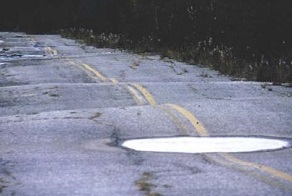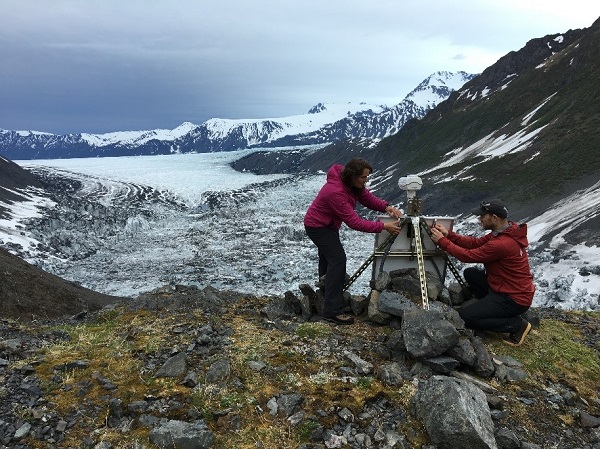
Permafrost degradation can create hazards and impacts water resources. Photo credit: Alaska DOT&PF.
During the last several decades, Alaska has warmed twice as fast as the rest of the United States. The impacts of a rapidly changing climate on Alaska are already pronounced, and will likely intensify as our climate continues to change. Changes to the environment affect Alaska's infrastructure, towns, and businesses, and Alaskan's livelihoods and lifestyles.
Since 2000, 14 coastal storm events prompted a state or federal disaster. More than $157 million was spent on disaster relief and property damage. Some coastal and riverine communities face relocation, migration, or protection in place.

Flooding in Golovin from the 2011 Bering Sea storm. Photo credit: Toby Anungazuk, Golovin.
Snow cover extent and depth have been decreasing in Alaska for nearly three decades. Alaska's glaciers are in steep decline and are among the fastest melting glaciers on Earth. Arctic sea ice extent has decreased dramatically and is now declining at a rate of 13 percent per decade. Permafrost has warmed by several degrees in northern Alaska and has already started thawing in many other parts of the state.
As snow, ice, and permafrost change, slopes are becoming more unstable, threatening public safety and critical infrastructure. Permafrost is thawing statewide, impacting more than 150 communities and thousands of miles of roads. Climate change is producing more frequent rain-on-snow events, which is leading to an increase in avalanche hazards across the state.
Alaskans need up-to-date, science-based information about climate change to capitalize on new opportunities, and safely and efficiently adapt to changing conditions. DGGS responds directly to stakeholder needs by providing data products and conducting applied research investigations that help communities and resource managers understand the impacts of climate change. Hazard assessments, targeted data collection, monitoring, and modeling help understand and estimate the future impacts of our changing climate and are necessary to support sound, science-based decision making on climate change issues. Learn more...

Bear Glacier outburst flood monitoring. Real-time hazard monitoring provides critical warning of imminent threats to public safety. Photo credit: Gabriel Wolken, DGGS.